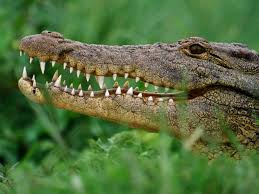Crurotarsans, a fascinating group within the broader archosaur clade, have captured the interest of paleontologists worldwide. They emerged during the Mesozoic era, exhibiting a remarkable diversity of morphological traits and adaptations. From semi-aquatic phytosaurs to the predatory rauisuchians, Crurotarsans offer invaluable insights into the intricate tapestry of prehistoric life.
Characteristics of Crurotarsans
- Diversity: Crurotarsans include a wide range of species, extending from the modern crocodiles to the extinct phytosaurs and rauisuchians.
- Ankle Structure: The name ‘Crurotarsan’ comes from their distinct ankle structure, which consists of a specialized joint allowing for increased mobility.
- Temporal Range: Fossil evidence suggests that Crurotarsans first appeared during the Late Permian period and are still present today in the form of modern-day crocodiles and alligators.
- Adaptability: Throughout history, Crurotarsans have demonstrated a high level of adaptability, surviving several mass extinctions.
- Diet: Crurotarsans are generally carnivorous, with diets varying based on the specific species and its size.
- Size Variation: Crurotarsans exhibit a broad range in size, from small species to large, formidable predators.
Major Clades within Crurotarsi
- Phytosaurs: They are long-snouted, semi-aquatic animals that resemble modern-day crocodiles. They are one of the earliest and most primitive clades within Crurotarsi.
- Rauisuchians: This group comprises large, heavily-built terrestrial carnivores. They were apex predators during the Triassic period.
- Aetosaurs: These herbivorous creatures had armored bodies and a pig-like snout. They are known for their distinctive heart-shaped scutes.
- Crocodylomorphs: This clade includes modern crocodiles and alligators, and their extinct relatives. They have a long evolutionary history, stretching back to the Late Triassic period.
- Suchians: This group is mainly characterized by their erect stance. It includes both rauisuchians and crocodylomorphs.
Ecological Role and Extinction
- Ecological Role: Dinosaurs, like modern organisms, played significant roles in their ecosystems. Some were herbivores, consuming large amounts of vegetation and aiding in plant control and nutrient cycling. Carnivorous dinosaurs, on the other hand, helped maintain a balance in the animal population by preying on other creatures.
- Extinction: The extinction of dinosaurs is attributed to a massive asteroid or comet impact occurring approximately 65 million years ago. The aftermath of this catastrophic event led to severe climatic changes, disrupting the dinosaurs’ food chain and leading to their eventual extinction. Additionally, volcanic activities could have contributed to their demise by causing global cooling and acid rain. The extinction of dinosaurs also opened up ecological niches for other animals to evolve and thrive. This event has had a profound impact on the history of life on Earth and continues to be an area of ongoing research and speculation.
- Cultural Significance: Dinosaurs have captured the imagination of people since their discovery, leading to their widespread representation in popular culture. They have been featured in numerous books, films, and other forms of media, and their fossils have become valuable treasures for museums. The fascination with dinosaurs has also led to the development of fields such as Paleontology and evolutionary biology, expanding our understanding of prehistoric life.
- Conservation: Although dinosaurs are extinct, their descendants still roam the Earth today in the form of birds. These creatures share many characteristics with their dinosaur ancestors, serving as living reminders of the rich evolutionary history of our planet. It is essential to conserve and protect these modern-day dinosaurs and their habitats to ensure the continued diversity and balance of our ecosystems.
Related Post : Orinoco Crocodile Overview
Conclusion
- Language plays a vital role in bridging communication gaps and fostering cultural understanding.
- The “EN-US” language code refers to American English, and its use ensures the content is tailored to American English readers.
- Despite the variations among English dialects, using a specific language code helps to cater to the target audience’s linguistic nuances.
- It is always crucial to confirm and adhere to the requested language code, ensuring effective and efficient communication.
- If not specified otherwise, the content should default to “EN-US”, maintaining consistency throughout the document.

